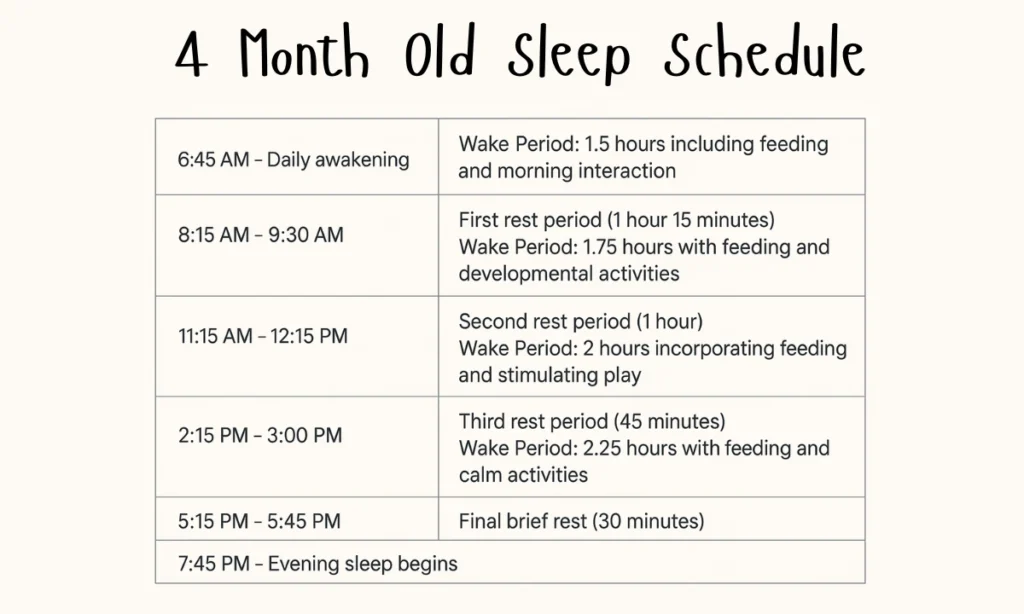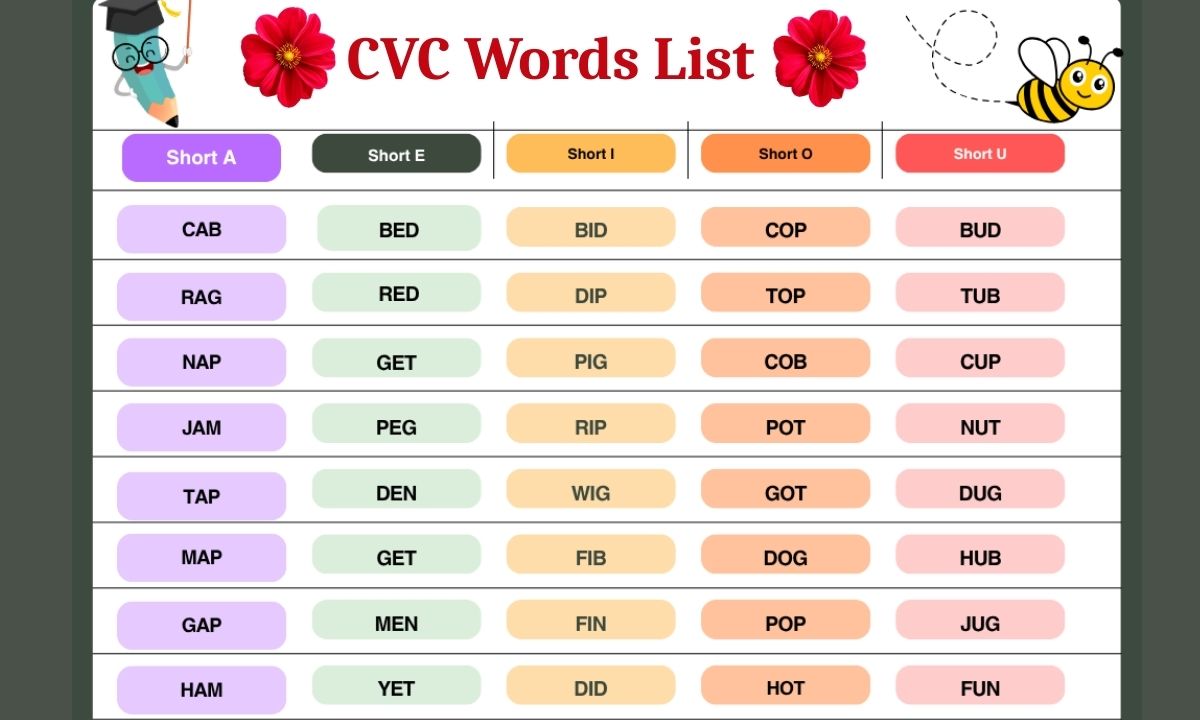Getting your four-month-old’s sleep schedule right starts with understanding the perfect 4 month old wake window. These carefully timed periods between sleep sessions can transform restless days into peaceful routines that benefit your entire household.
The Science Behind Your 4 Month Old Wake Window
A 4 month old wake window defines the ideal timeframe your baby can remain alert before requiring rest. At this developmental stage, babies function optimally with 1.5 to 2.5 hours of active time between sleep periods.
The first 4 month old wake window typically spans 1.5 hours when your baby’s energy levels remain highest after overnight sleep. Throughout the day, these periods gradually increase, culminating in hours before nighttime rest. This progressive pattern supports natural sleep drive development.
Misjudging wake window timing creates overtired babies who resist settling and sleep poorly. Accurate timing produces calm, content babies who transition smoothly into restorative sleep cycles.
Calculating How Much Daytime Sleep for 4 Month Old Babies
Determining how much daytime sleep for 4 month old infants need requires understanding their total rest requirements. Four-month-olds generally need 3.5 to 4.5 hours of daytime sleep within each 24 hours.
This sleep is distributed across 3-4 separate nap sessions. Your baby might prefer three substantial 1-1.5-hour naps, or four briefer 45-minute to 1-hour periods. Both approaches satisfy how much daytime sleep for 4 month old babies require for healthy development.
Remember that consistency in the amount of daytime sleep for 4-month-old babies directly impacts nighttime rest quality. Adequate daytime sleep prevents overtiredness that interferes with evening settling.
Analyzing How Much Daytime Sleep for 4 Month Old 2 Naps Offers
Parents occasionally ask about how much daytime sleep for 4 month old 2 naps schedules provide. Most babies this age lack the stamina for extended wake periods that two-nap routines demand.
A successful two-nap pattern requires each sleep session to last approximately 2 hours, delivering 4 hours of total daytime rest. However, this necessitates 3+ hour wake windows that typically overwhelm four-month-old nervous systems.
LittleNest advises waiting until babies naturally consolidate naps around 6-8 months rather than forcing premature schedule changes that may disrupt established sleep patterns.
Designing Your Optimal 4 Month Old Sleep Schedule

An effective 4 month old sleep schedule combines reliable structure with necessary flexibility to accommodate your baby’s changing needs and family lifestyle demands.
Proven 4 Month Old Sleep Schedule Framework:
This 4 month old sleep schedule delivers approximately 3.75 hours of daytime rest while honoring age-appropriate wake windows. Modify timing according to your baby’s individual temperament and household routine.
Identifying Your Baby’s Wake Window Readiness
Mastering 4 month old wake windows requires recognizing your baby’s personal sleepiness indicators before they reach the overtired threshold. Subtle early signs include reduced activity levels, softer vocalizations, or diminished engagement with toys.
Clear fatigue signals like yawning, eye rubbing, or fussiness indicate the optimal window has passed. Learning to interpret gentle early cues prevents progression to overtiredness that complicates settling processes.
Fill wake windows with age-appropriate activities that provide stimulation without overwhelming developing sensory systems. Reading, singing, gentle exercise, or brief outings offer engagement while building appropriate tiredness.
The Four-Month Sleep Transformation
During the fourth month, babies undergo crucial neurological development that fundamentally changes their sleep architecture. They begin experiencing distinct sleep phases similar to adult patterns, replacing simplified newborn sleep cycles.
This biological evolution explains why previously reliable sleepers may suddenly experience increased night wakings or abbreviated naps. Their maturing brains are acquiring skills to navigate complex sleep transitions—abilities requiring time and practice to master.
Maintaining consistent wake windows throughout this developmental phase supports your baby’s adjustment to sophisticated sleep cycles. Strategic timing helps them achieve sleep onset during phases when settling occurs most naturally.
Resolving Wake Window Complications
Brief naps frustrate parents establishing proper 4 month old wake windows. When babies routinely wake after 30-45 minutes, provide another sleep opportunity following a moderately reduced wake period instead of extending alertness until the next scheduled rest.
Schedule disruptions impact all families periodically. When routines become displaced, prioritize maintaining appropriate wake intervals over rigid time adherence. If morning activities extend longer than planned, preserve proper spacing even if later naps shift accordingly.
Temporary factors like growth phases, developmental progressions, or minor illnesses alter wake window tolerance. During these periods, babies frequently require shortened alert periods or additional comfort while preserving basic schedule framework.
Environmental Elements Supporting Wake Windows

Physical surroundings substantially influence babies’ wake window tolerance and sleep transition success. Room temperature, illumination levels, and ambient sounds all affect comfort and settling capacity.
Create reliable pre-sleep environmental changes that signal movement from active wake windows toward rest time. Reduced lighting, consistent background sounds, and optimal temperatures help prepare your baby’s physiology for sleep onset.
Initiate calming routines 10-15 minutes before wake windows conclude. These transition periods help babies progress from stimulation toward relaxation, facilitating smoother and more predictable sleep commencement.
Long-term Wake Window Success Strategies
Consistency builds your baby’s confidence in sleep expectations while allowing natural adaptation for developmental growth. Most infants adjust to regular wake window patterns within 10-14 days of steady implementation.
Balance schedule adherence with intuitive parenting instincts. When your baby appears content during wake periods and settles reasonably for sleep, you’re likely maintaining effective timing regardless of minor variations.
LittleNest emphasizes patience throughout this learning process. Both parents and babies develop new competencies around sleep timing recognition. Acknowledge gradual improvements while maintaining realistic developmental expectations.
Frequently Asked Questions
How do I know if my 4 month old wake window timing is correct?
Well-timed wake windows result in babies who settle within 10-20 minutes and sleep for age-appropriate durations. Consistent resistance or very brief naps may indicate timing adjustments are needed.
Can illness affect wake window requirements?
Yes, unwell babies often need shorter wake windows and additional sleep overall. Follow your baby’s cues for extra rest while maintaining basic routine elements during recovery periods.
What should I do if my baby resists sleep despite perfect timing?
Some babies need extra settling support even with ideal wake window timing. Evaluate your sleep environment, pre-sleep routines, and consider whether gentle sleep training methods might be beneficial.
How do growth spurts impact wake windows?
Growing babies frequently require modified wake windows and increased sleep. Watch for signs of greater tiredness and adjust schedules temporarily to accommodate developmental needs.
Should I maintain wake windows during travel?
Preserve wake window principles while remaining flexible with exact scheduling. Alternative sleep locations like car seats or strollers still provide valuable rest even when away from home environments.




